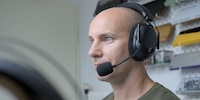
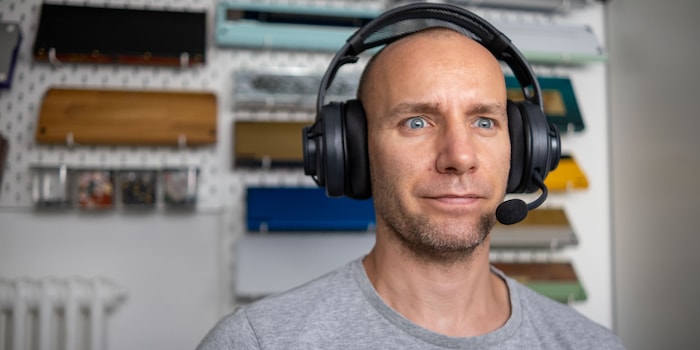
The Atlas Air is seriously comfortable
It may have been too big for my head, but I’ve still never worn a headset as comfy as the Atlas Air. Manufacturer Turtle Beach has worked its magic on the drivers, creating glorious sound. The software, on the other hand, is a nightmare.
Open-back gaming headsets are a rarity, but the Atlas Air is the exception that proves the rule. It also has unique features you wouldn’t notice at first glance. Each ear cup is connected to the headband with three rubber bands. They «float» on the headband, making the headset super comfortable. Not only that, but the Atlas Air offers good sound. However, the software for configuration and processing is unimpressive.
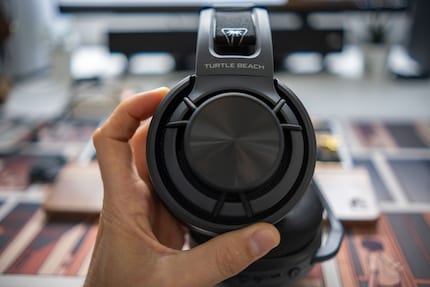
Source: Kevin Hofer
Driver sound quality: benefits from open-back ear cups
The Turtle Beach Signature Sound equaliser profile is activated by default. I leave it that way throughout my review. Personally, I’m of the view that headsets should sound good out of the box, without making adjustments in the equaliser. And the Atlas Air does exactly that. As is typical for open-back headphones, they have a natural, clear sound.
The open design helps the headphones reproduce sound more naturally and with a better spatial effect than closed headphones. For instance, the hum of the fluorescent lighting in Autopsy Simulator sounds like the real thing – not the muffled imitation you typically hear when using closed headphones. In Ghost of Tsushima, I can hear which direction arrows are coming from. Plus, the score accompanying Eiyuden Chronicle: Hundred Heroes sounds outstanding.
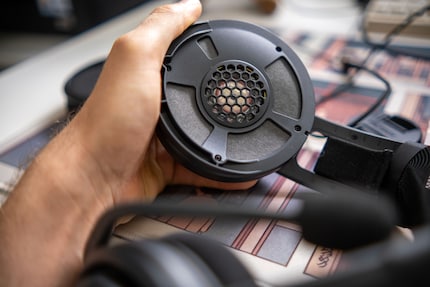
Source: Kevin Hofer
I almost spent more time listening to music with the Atlas Air than playing games. It delivers rich bass, full mids and crisp highs. The lyrics to Nightcrawler by Czarface, for example, don’t get drowned out by a sea of bass. What’s more, the headset successfully manages the balancing act between treble and bass. In Ode to Nujabes by Funky DL, the sound is full and balanced.
Of course, the headset’s open-back design has its downsides too. Namely, that the ear cups don’t protect against ambient noise. Still, at least I can hear my sons when they try to sneak up behind me to give me a fright.
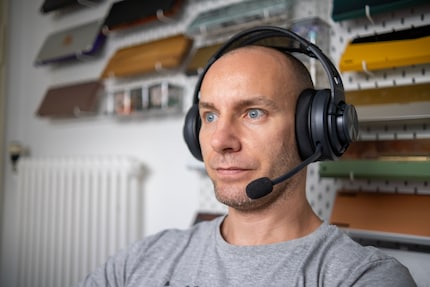
Source: Kevin Hofer
One negative point struck me regarding the volume control. Anything below 50 per cent of the maximum volume is barely audible. I can only hear the sound from 50 per cent volume and above, and I notice the most significant changes between 70 and 100 per cent. I’d like to see a more refined, more even breakdown.
Microphone audio quality: no more than passable
The microphone on the headset is removable. If there comes a point when you don’t need it, you can simply leave it to one side. If you’ve clipped it on, however, you can fold it out and then up again. It’s only active when it’s folded down. The microphone arm is flexible and can be rotated in all directions. This is handy because it means I can move the mic close to my mouth. However, if I forget to straighten it before folding it up again, it bops me on the forehead.
I’m not exactly enamoured with the microphone’s audio quality, but it’s fine for Teams calls and meetings. Here’s a quick audio sample:
Box contents and ergonomics: too big, but still comfortable
The Atlas Air comes with a carry case, a USB-C and a 3.5-mm cable and a USB transmitter for wireless connection. As well as this 2.4 GHz connection, the headset also features Bluetooth. You can’t use both of these modes simultaneously. As a result, you can pair the headset with any device you can think of. If you want to connect it to an Xbox, however, you’ll only be able to do so with the 3.5-millimetre cable.
The manufacturer says the battery lasts up to 50 hours. That’s an optimistic figure, and only likely to be true if you’re using the headphones via Bluetooth. Using the dongle, you get 35-40 hours of juice. That’s still plenty compared to the Stealth Pro, which holds out for ten hours. For me, that’s enough for a week of music at work and gaming in the evening.
The thing I notice as soon as I pick up the headset is that it’s light. 301 grammes, to be precise. This makes it more than 100 grammes lighter than the Arctis Nova Pro Wireless, the best-selling headset in our range right now. If it didn’t slip so easily, I’d hardly feel it on my head. It looks gigantic on my little noggin, but it’s extremely comfortable.
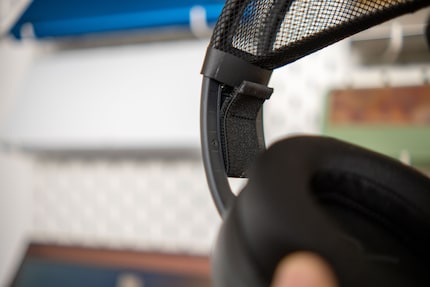
Source: Kevin Hofer
You adjust the headset using the Velcro fasteners mentioned above. This works pretty well. It’s not the headband that rests on your head, it’s the elastic band used to adjust the size. I barely feel it. After a few hours of wearing it, I even forget it’s there.
The ear cups are really comfortable too. Thanks to the fastening mechanism with the rubber bands, they adapt to the shape of my head well. However, you can’t fold them away or rotate them, which makes the headset less portable. The fabric ear pads feel comfortable and don’t make me sweat much. My ears don’t touch the drivers, which adds to my sense of comfort. I don’t even feel any pinching when I have my glasses on.
Turtle Beach has used fabric and plastic as materials. While this may look cheap at first glance, the plastic especially is high quality. I can rotate the headset in any conceivable direction without breaking it. I’m more concerned about the Velcro fasteners and the mesh stretched over the elastic band and headband. Those are probably the parts of the headset that’ll wear out quickest.
Features and functions: oh lordy, the software
The Atlas Air is reduced to the bare necessities. There are three buttons on the headset itself: the on button, a button for switching between wireless modes and the Bluetooth pairing button. You adjust the volume using a large dial on the outside of the ear cup. This is located on the left, as are the other controls, microphone and ports.
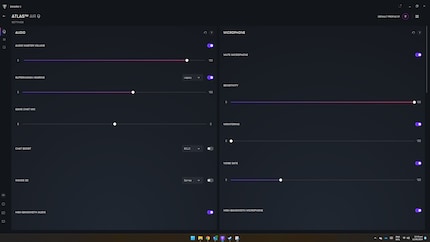
Source: Kevin Hofer
Besides this, the headset doesn’t have any special features. Naturally, as a result of its open-back design, it doesn’t have active noise cancelling. The Atlas Air can be configured using its Swarm II software, where you can activate and configure the Superhuman Hearing setting. This amplifies certain sounds in games, such as opponents’ footsteps. However, you can also adjust the game-to-chat volume ratio. On top of this, the mic can be configured. There’s also an equaliser, power settings and the option to carry out firmware updates. It was during one of these that the software crashed and I had to restart it. I also had to deal with other bugs, including the fact that my settings weren’t adopted.
In a nutshell
A good headset with few to no competitors
The Atlas Air has won me over with its comfort and sound. Thanks to its wide range of connectivity options, it can be used with any device you can think of. With a battery life of around 40 hours, there’s nothing standing in the way of marathon gaming sessions. What’s not quite so good is the microphone, and the software still looks like a beta version. I’m not a fan of the Velcro size adjusters or the mesh around the headband either – I’m concerned they’ll break soon.
Personally, I’d rather go for a combination of open-back headphones such as the Beyerdynamic DT990 Pro and a podcast microphone. While that involves going without wireless connectivity, the sound quality is in a league of its own. As for wireless alternatives, there aren’t any in this price range. The only one I can think of is the Audeze Maxwell PS, but it’s considerably more expensive than the Atlas Air.
Pro
- seriously comfortable
- good sound
- plenty of connectivity options
- long battery life
Contra
- finish
- Microphone
- Software

From big data to big brother, Cyborgs to Sci-Fi. All aspects of technology and society fascinate me.

